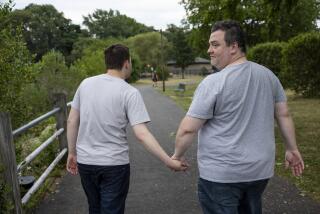A Few Studies Support Magnets, but All the Evidence Isn’t Yet In
- Share via
There have been only a few double-blind scientific studies of magnets, in which both the researchers and study subjects had no idea who was getting a real magnet and who was getting a sham magnet.
Among them:
* Research published in the December issue of the Journal of Plastic and Reconstructive Surgery studied 20 patients recuperating from liposuction of excess body fat, or “love handles.” In the research by Dr. Daniel Man, a board-certified plastic surgeon in Boca Raton, Fla., 10 patients wore magnetic pads on their wounds; 10 others had sham magnets in the pads. Those who got the magnetic pads had less pain in the first week, less swelling in the first four days and less black-and-blue discoloration in the first three days than did the control group.
* A study published in the January 1998 issue of the American Journal of Pain Management found improvements among chronic foot pain patients who wore magnetic shoe inserts on one foot. Dr. Michael Weintraub, a neurologist at New York Medical College in Valhalla, N.Y., found that nearly all of the patients had less pain in the foot with the magnetic pad.
* A 1997 study published in the Archives of Physical Medicine and Rehabilitation looked at 50 patients with post-polio pain. The research by Dr. Carlos Vallbona, a professor at Baylor University College of Medicine in Texas, found that of 29 patients who wore magnets, 76% reported a decrease in pain after 45 minutes. Those who got placebos reported only slight improvement.
Other study findings are pending. Dr. Agatha Colbert, an assistant professor of physical medicine and rehabilitation at Tufts University in Massachusetts, is lead author of a magnet study that has been accepted for publication in a rehabilitation journal. In that study, patients suffering from fibromyalgia, a syndrome characterized by widespread muscle and skeletal pain and fatigue, reportedly had less pain after sleeping on magnetic mattress pads.
Ann Gill Taylor, a nursing professor and director of the Center for the Study of Complementary and Alternative Therapy at the University of Virginia, has not yet published results of a similar study of magnetic mattress pads in fibromyalgia patients. The long-awaited study was sponsored by a private Canadian foundation, but the center is supported by the National Institutes of Health’s Office of Alternative Medicine.
Other doctors in several states are enrolling patients in double-blind studies of magnets’ impact on lower back pain and carpal tunnel pain in the arms.






